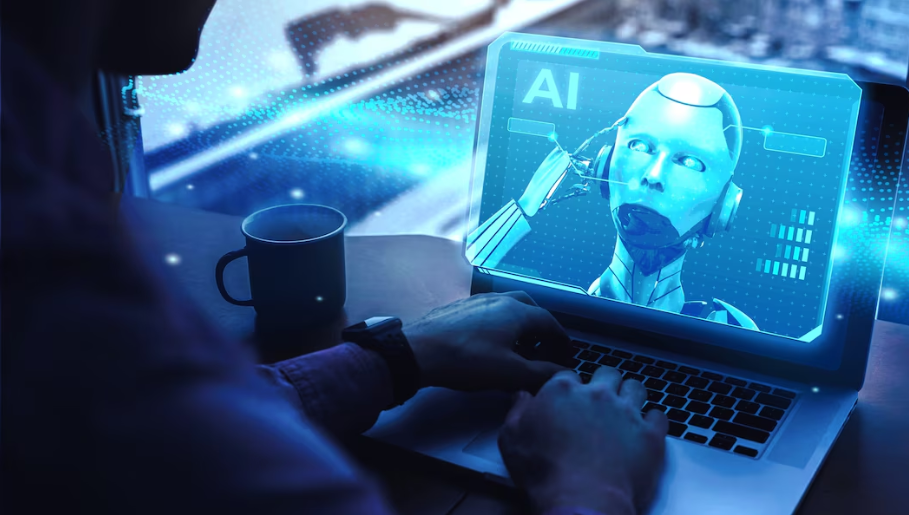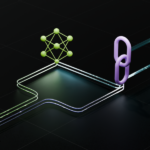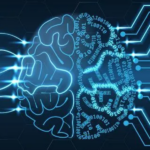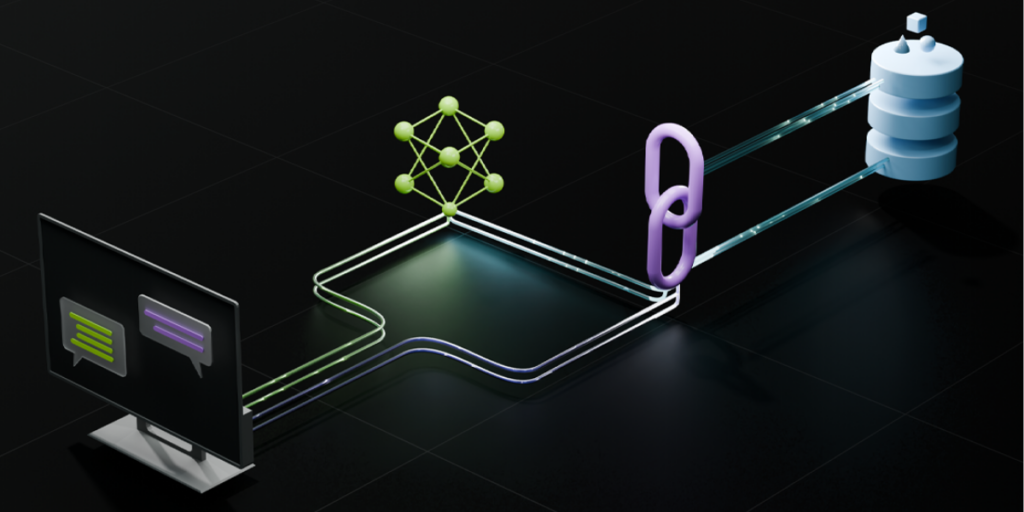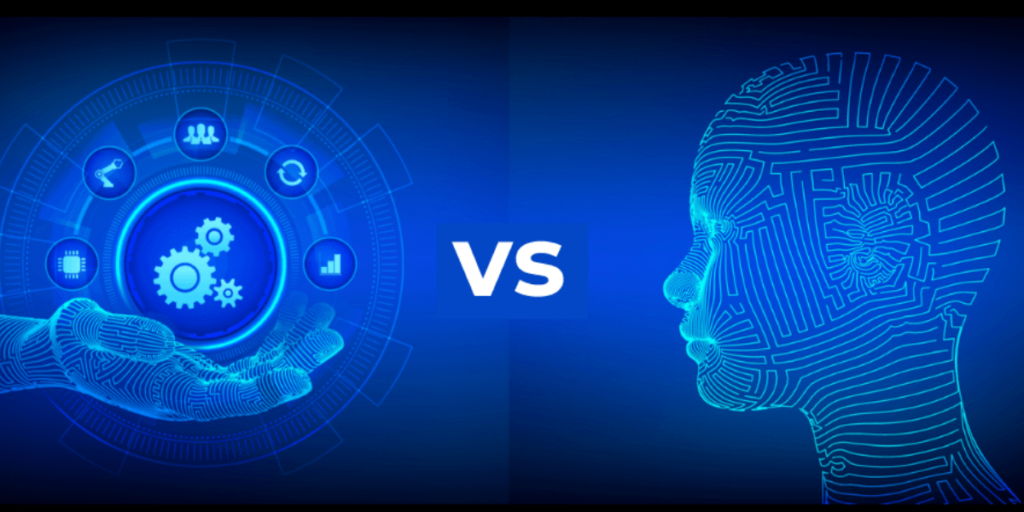Artificial Intelligence is no longer a viable option in the business world and won’t be a defining factor. However, the use of adaptive AI in business is transforming the landscape. According to the latest statistics, over 95% of companies pursue AI initiatives.
Look to the latest AI options to stay competitive and ahead. AI is one aspect that can help increase your profits. The future of artificial intelligence (AI) technology is called adaptive AI. It can adapt the algorithm to changes in the real world!
This article will thoroughly understand adaptable AI and the best ways to incorporate it into your company.
What is Adaptive AI?
Adaptive AI is a term used to describe artificial intelligence systems that can modify their algorithms in response to the data they process, gaining from experiences and new knowledge to improve efficiency. This kind of AI is distinguished by its ability to learn dynamically, which permits it to develop its capabilities and understanding without explicit reprogramming.
This flexibility is attainable through techniques like neural networks, machine learning, and deep learning, which allow AI to identify patterns, make predictions, and make decisions based on real-time data. Adapting AI is beneficial when conditions often shift or customized responses are needed, offering flexibility that static AI systems cannot match.
Growth of Adaptive AI: Market Statistics
The use of customized adaptive AI within enterprises is growing rapidly, as recent market research shows its disruptive impact. According to recent reports, the global industry for adaptable AI solutions is predicted to grow exponentially, with the potential for a compound annual rise (CAGR) of over 30 percent in the coming years.
Using data, let’s examine the rise in the application of adaptive AI in business in recent years.
- The world adaptable AI market was worth USD 736.5 million in 2022. It is expected to grow at a rate of 42.6% between 2023 and 2030.
- Gartner forecasts that by 2026, businesses that have adopted AI engineering methods to develop and manage adaptable AI systems will surpass their competitors by a minimum of 25% in terms of the time and effort required to create AI models.
Thus, these figures indicate that the application of adaptive AI within businesses will increase in the near future. Companies that use adaptive AI will enjoy advantages over firms that do not.
Benefits of Adaptive AI
Adaptive AI technology offers various advantages, from improving efficiency to personalizing your services. The capacity to adapt and learn can set new standards for technology and is changing the way businesses operate.
The advantages of adaptive AI development services include:
Enhanced Efficiency
Adaptive AI helps things run more efficiently and speedier. It recognizes patterns and anticipates outcomes, decreasing errors and speeding up decision-making. Tasks will be completed more quickly, with fewer mistakes, and without needing someone to keep track of the work.
Personal Touch
Flexible AI tools can recognize your personal preferences. They analyze your preferences and choices and then suggest items that will suit you the best. Be it for content or shopping suggestions, you will receive recommendations that feel personalized just for you. This will make you feel more comfortable, but it will keep returning.
AI Compared
The distinction between adaptive AI and conventional AI is obvious. Traditional AI is governed by set rules; however, adaptive artificial intelligence can learn from data that changes as it becomes available. This means it can keep up with developments and provide solutions that remain up-to-date.
Market Growth
The need for adaptable AI is growing, and businesses are keen to stay on top of the most advanced technology. This increasing demand indicates that more flexible and adaptive technology is becoming commonplace.
Adaptive vs Generative
Comparing adaptive AI to Generative AI it’s all about how they change. Adaptive AI is focused on altering its responses based on the latest information, whereas the generative AI model is about making new things. The strength of adaptive AI lies in its capacity to continue learning and changing, making it extremely useful for continuous tasks.
Challenges of Implementing Adaptive AI in Businesses
The integration of adaptive AI is also a challenge for users. It’s more complicated than it appears. It is, therefore, essential to address these issues efficiently to ensure a successful and adaptable AI implementation in business.
The top challenges in adapting AI within a company:
Data Quality and Availability
The data used to create an adaptive AI should be of high quality. Incorrect or faulty data may affect the operation of adaptive AI and lower the quality of the result.
Skilled Professionals
Integrating adaptive AI into business operations is not easy. Therefore, it is essential to locate a skilled adaptive AI development company or developer with experience and know-how in this area.
Security and Privacy Risks
Privacy and security threats are among the most significant issues when implementing adaptive AI in enterprises. Security risks related to adaptable AI systems, such as cyber-attacks or data breaches, must be managed.
Furthermore, you must use cutting-edge security measures and protocols to safeguard your data and AI from cyberattacks. So, here are a few problems you must overcome when integrating adaptive AI into your business.
How to Implement Adaptive AI?
Numerous methods and tools could be employed to develop adaptive AI according to the issue’s complexity and nature, the data’s availability, and the demand and efficiency. Some of the most well-known and widely utilized techniques and tools include:
Reinforcement Learning
The reinforcement learning process allows agents to take lessons from their actions and the penalties or rewards they are rewarded with from their environment. Reinforcement learning is a method that trains an agent to carry out complex and sequential tasks like engaging in games, controlling robotics, or even navigating the environment.
The reinforcement learning technique can be combined with different methods, including deep learning, to build stronger and more scalable adaptive AI systems. Some software that can be utilized for reinforcement learning includes [OpenAI Gym [TensorFlow Agents and PyTorch. Combining reinforcement learning with other techniques such as [PyTorch] is possible.
Reinforcement learning is built on the concept of learning through trials and errors, in which an agent investigates the state space and then tries various strategies while learning through the input it is given. Reinforcement learning is classified into various kinds, such as model-based or model-free, value-based, policy-based, off-policy, on-policy, and so on.
The reinforcement learning process can be improved using various methods, including function approximation, temporal differences training, Monte Carlo methods, Q-learning, policy gradients, actor-critic, etc. Reinforcement learning can be used in different areas, such as gaming, robotics, healthcare, finance education, and more.
Evolutionary Algorithms
Evolutionary algorithms are a method that mimics natural evolutionary processes, including crossover, mutation, or selection, to develop and optimize solutions to any given issue. These algorithms can be employed to alter the structure, parameterization, or behavior in an AI system, for example, the weights, structure, or guidelines of an artificial neural system, an algorithm that is a genetic or fuzzy system.
They can also be employed to develop the entire flexible AI system, such as the swarm of agents, cellular automation, or an artificial life shape. The tools that can be utilized for implementing evolutionary algorithms include [DEAPand [ECJ] and [EvoSuiteand [EvoSuite]. These algorithms are based on the ability to survive the fittest, which means that the members of an entire population compete and work with one another, and the top ones are chosen and then reproduced.
The term “evolutionary algorithms” can be divided into genetic algorithms such as evolutionary strategies, genetic programming, and evolutionary programming. These algorithms can also be improved using various techniques, including coevolution, multi-objective optimization and niching, diversity preservation, and more. Evolution algorithms can be applied to multiple fields, such as engineering, design, optimization, music, art, and more.
Neuroevolution
Neuroevolution is a method that blends evolutionary algorithms with neural networks to alter the parameters of the neural network’s structure, behavior, or structure. Neuroevolution can be utilized to build flexible AI systems that learn from interactions, data, and outcomes and adapt their strategies in response. Neuroevolution can also construct adaptable AI systems that deal with uncertainty, complexity, and change and handle new challenges and situations. The tools that could be used to create neuroevolution are [NEAT [HyperNEAT], [NEAT], and [ES-HyperNEATand [ES-HyperNEAT].
Neuroevolution is based on the concept of transforming the brain. Neurons are viewed as a mutable or crossed genotype, and the health of the brain is measured through the performance of the genotype. Neuroevolution is classified into distinct types, like indirect or direct encoding, different topologies, heterogeneous or homogeneous networks, etc.
A variety of techniques can further improve the neuroevolution process, such as novelty search, quality diversity, modular networks, and more. Neuroevolution applies to various domains, such as gaming and control of natural language.
Meta-Learning
Meta-learning, also referred to as learning to learn, is a method that focuses on educating AI systems to swiftly adapt to new environments and tasks by using knowledge from previous experiences. This process involves creating models that can learn and apply their expertise across various tasks and environments, enabling them to adapt quickly to new scenarios. Meta-learning is particularly beneficial when the AI system has to learn new skills or acquire knowledge continually. Tools such as [MAML, [Reptile], and [Meta-RL] are frequently used to implement meta-learning techniques.
In meta-learning, this type of learning is when the AI algorithm is trained to perform various tasks. The information learned during this training is used later to enable rapid learning for unknown tasks. This is similar to humans, who learn new concepts more effectively using their previous knowledge and experience. Meta-learning can be used across various fields, including robotics, natural language processing, and computer vision. The ability to rapidly adapt to the changing environment is essential in these areas.
Transfer Learning
Transfer learning refers to a process that involves training models on one thing and then applying that information to a different task. This technique is beneficial when the quantity of labeled data for the task is small. The model can draw upon information gained from a task with a wealth of information. Transfer learning is classified into several kinds: transfer based on features, in-situ transfer, and relational knowledge transfer.
Tools like [TensorFlow Transfer Toolkit] ], the [Hugging Face Transformers], and [scikit-learn] offer implementations that allow transfer learning. Transfer learning is used successfully across various domains, such as image recognition, natural language processing, and speech recognition. A model, for instance, trained on a large data set to recognize images can be refined on smaller amounts of data to perform a particular job in image recognition and achieve higher performance than if learning from scratch.
Ensible Learning
Ensemble learning is the process of combining the predictions of several models to increase overall performance. This method can be outlined based on the notion that a range of models together can make more precise predictions than a single model. Common methods of ensemble learning comprise bagging, boosting, and stacking.
Tools such as [scikit learn], [XGBoost], [Scikit-learn and [LightGBM] are versions of the most popular algorithms for ensemble learning. Ensemble learning is a method of application in various AI applications, such as classification, regression, and anomaly detection. The variety of models that make up an ensemble may increase the reliability, reduce overfitting, and increase generalization for unobserved data.
Hybrid Approaches
Hybrid strategies combine various AI methods to maximize their strengths while addressing their weaknesses. For instance, the combination of reinforcement learning and evolutionary algorithms or incorporating meta-learning in neuroevolution may result in AI systems that have enhanced adaptability. Hybrid methods are typically designed to address specific problems and offer more durable and adaptable solutions.
The selection of the techniques and tools to implement adaptive AI depends on the specifics of the issue being addressed, the available information, and the intended outcomes. Experimentation and iteration are vital to improving and refining the strategies chosen. As AI research advances, new tools and techniques will likely emerge, providing the most advanced methods to develop adaptable systems that cope with complicated and dynamic environments.
In the simplest terms, adaptive AI is constantly evolving due to the continuous advances of machine learning and artificial intelligence. The techniques and tools mentioned—reinforcement learning, evolutionary algorithms, neuroevolution, meta-learning, transfer learning, ensemble learning, and hybrid approaches—offer a diverse set of options for building adaptive AI systems.
Successful adaptive AI applications require a thorough knowledge of the issue, careful evaluation of the accessible data, and careful selection of the appropriate methods and tools. In the same way that AI scientists and researchers continue pushing the limits of what can be achieved, the future is full of exciting possibilities for creating ever-intelligent and adaptable systems.
Steps to Implement Adaptive AI
It is essential to ensure that adaptive AI is implemented correctly to ensure its effective and efficient use within your company. Here is the step-by-step procedure for successfully integrating adaptive AI within your business.
Define Clear Objectives
Begin by clearly defining the purposes of your AI system. Define the desired outcomes, such as the categorization of text or images or user behavior predictions, as well as market analyses. Utilize measurable metrics such as accuracy and precision in performance evaluation. Know the audience you want to reach and make the system more user-friendly.
Gather Relevant Data
Gather information that aligns with your goals to create a solid foundation. Make sure the data you collect is diverse, updated, current, and securely kept. Update the data regularly to keep it relevant and useful for modeling.
Develop the Algorithmic Model
Transform the collected data into actionable information. Select the right machine learning algorithms based on the specific problem. Process the data by normalizing and addressing missing values. Optimize hyperparameters to improve model performance. Benchmark the model against an independent validation data set.
Make Real-Time Decisions
Utilize the power of adaptive AI by providing real-time decision-making. Integrate data from different sources, process it in real-time, and then use predictive analytics to make instant decisions. Create a feedback loop to ensure continuous refinement of the system.
Enhance and Refine the Model
After deployment, continue to modify and update the model to adjust to the changing environment and users’ needs. Adjust hyperparameters, perform feature engineering, and retrain your model using fresh information to ensure its effectiveness.
Deploy the Model
Transfer this model from the test environment to a real-world application. Convert the codebase into machine-friendly formats, provide the infrastructure, and control the model’s life cycle with regular updates.
Monitor and Improve
Set up ongoing monitoring systems to ensure the system’s durability and efficiency. Track performance, update the data, re-evaluate the model in response to changing conditions, and increase the number of components to improve continuously.
By following these steps, you can create an adaptable AI system that is in line with your goals, flexible, capable, durable, and able to adjust to constant improvement.
Real-World Use Cases of Adaptive AI
Adaptive AI technology has proved to be revolutionary and has been applied to a wide range of industries. Its capacity to adapt, learn, and grow in a self-learning manner makes it a valuable tool in highly dynamic environments.
Let’s examine some of the practical examples and use cases in various industries:
Robotics
The Adaptive AI revolution has changed the field of robotics in various ways and is empowering machines to improve the user experience and business operations across various sectors.
For instance, robots working with this advanced AI system can analyze production data, make real-time adjustments, anticipate maintenance needs, and boost output. They can also optimize factory floors and increase autonomous car performance in challenging environments.
Agriculture
Particularly in agriculture, adaptable AI allows farmers to efficiently analyze weather patterns, soil data, and historical trends to provide precise harvesting and planting recommendations. The AI system also enables the monitoring of crop plants for signs of illness or infection, which triggers specific interventions.
Furthermore, live analysis of soil water and nutrient levels aids farmers in maintaining optimal fertilizer and water use. For example, Blue River Technologies and FarmSense use adaptive AI to maximize the use of pesticides and herbicides, focusing on efficient and sustainable agriculture practices.
Education
Adaptive AI is a powerful instrument for learning since it can analyze students’ performance in real-time, allowing them to design an adaptive and personalized learning path. The AI system can also assist in identifying students who are struggling, which allows teachers to offer them prompt and targeted assistance.
This AI-powered technology also provides stimulating learning experiences, such as personalized games-based learning. Duolingo uses adaptive AI algorithms to tailor the language learning experience, monitoring users’ progress and adapting to their specific language level to ensure the most efficient learning experience.
Healthcare
Healthcare has greatly benefited from the introduction of AI. It has assisted doctors with providing efficient care to patients, detecting disease in the early stages, and establishing individualized treatment plans. AI systems also allow for the automation of administrative tasks, such as appointment scheduling and medical record analysis.
Nuance Communications’ PowerScribe One assists radiologists in interpreting medical images and generating reports. The software learns from users’ feedback to increase efficiency and accuracy.
Industrial Monitoring
In this area, advanced AI systems examine sensor data and previous patterns to anticipate equipment failures, which allows preventative maintenance. They also assist in reducing energy consumption and identifying security risks.
Siemens employs AI technology to anticipate failures and wear on equipment, which allows for proactive intervention and minimizes downtime.
Finance
Adaptive AI can be a valuable tool for trading and investing by sorting data relevant to trading and investing and responding precisely to market changes and unexpected changes. It can also assist in detecting fraud by analyzing customer patterns, identifying suspicious behaviors, and alerting institutions of the possibility of fraud.
Equifax utilizes deep learning powered by AI to assess customers’ risk by analyzing financial decisions for 24 months to allow additional loans without causing further losses.
Envisioning the Future of Adaptive AI
In the near future, the world of adaptive AI promises advances in machine learning, natural language processing, and autonomous systems that are set to open new possibilities. The most anticipated developments are:
AI-driven Automation
The Adaptive AI system will gradually automate complex decision-making, enhancing human capabilities while increasing efficiency across different sectors.
Autonomous Agents
Intelligent AI-powered autonomous agents that adapt to changing conditions will appear as virtual assistants capable of doing tasks, interfacing with users, and gaining from their experiences to provide individualized guidance and support.
Ethical AI Frameworks
With the growing popularity of AI and AI-driven technologies, there will be an increasing emphasis on ethical AI guidelines and accountable AI management to guarantee fairness, transparency, and accountability in AI-driven decisions.
Conclusion
In our final exploration into adaptive AI development in 2025, it is clear that this technology isn’t only a trend but a transformative force shaping the future. Based on adaptive AI and ranging from autonomic learning to real-time ad-hoc adaptability, these capabilities set new standards for efficiency in personalization, decision-making, and personalization across all industries. Incorporating these advances gives businesses an advantage in competition, as it allows companies to respond quickly to the changing environment and demands of users.
However, unlocking the full capabilities of adaptive AI requires a profound knowledge of its fundamentals and a strategic approach to its implementation. By staying informed of the latest developments and incorporating the insights into your work and processes, you will be at the forefront of technological advancement.
As we advance, the promise of adaptable AI grows with exciting possibilities and difficulties. Becoming ahead is crucial to harnessing these new technologies efficiently and achieving sustainable success in an ever-technologically advanced and automated environment.

